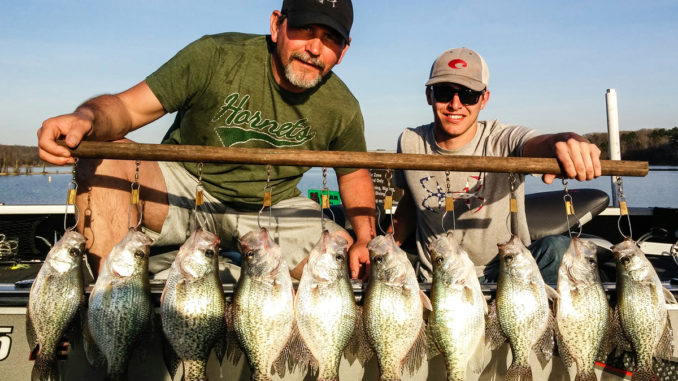
Summer’s heat sends Kerr Lake’s crappie to deep water, where they take up residence around brush piles. They’re not difficult to find, and these guides will help you on the catching end.
Not everyone awakens on a balmy, summer morning excited about crappie fishing, but if you do, chances are you are privy to a selection of deep brush piles that are sure to be laced with prime panfish when they evacuate shallow water in search of cover.
On the North Carolina-Virginia border an hour or so north of the Raleigh-Durham area, the floor of Kerr Lake, aka Buggs Island, is literally littered with enough brush to keep an angler busy casting jigs and jigging spoons all summer long.
A cover-loving fish, crappie crave a place to hide and ambush prey. When rising water temperatures drive them from the shallower creeks where stumps, bushes and boat docks abound, anything they can cling to draws them like flies to honey — even a tree tied to a cinder block.
How did 50,000-acre Kerr Lake accumulate such a wealth of sunken treasures? Its devoted anglers, who happen to be brush-pile architects, have taken the time to position them in the best possible places. Once sunk and on the bottom, it’s available to anyone who can find it.
“I like to fish for crappie the best way that I can catch them,” said guide Keith Wray of Eden, “This time of year, that’s going to be brush-pile fishing. Of the 600 brush piles I fish, I’ve made about 300, and the other 300 I’ve found; somebody made them for me. With the electronics we have in this day and age, there are no more secret spots.”
When making his own piles, Wray, who runs Fish Doc Guide Service, often christens a new location with willow, noting that crappie will use it faster and better than any other wood.
“But, it’s the softest and rots the quickest; it’s usually gone in two to three years,” he said. “If it’s a good spot, we’ll come back with a hardwood like sweet gum, maple or sycamore. Sycamore is especially good because it has so much space between the limbs. You have to have places for the minnows to hide but also enough space for the big fish to maneuver. If it’s too thick, you won’t catch anything but small crappie.”
The U.S. Army Corps of Engineers, which owns Kerr Lake, requires would-be lumberjacks to obtain a permit for their endeavor and report the GPS coordinates of the finished product. Also, the brush must be brought to the lake — not harvested from Corps land — and placed in a safe location where it won’t obstruct travel.
Equally as important, and more time-consuming than preparing a pile to be sunk, is choosing its resting place.
“By this time of year,” said Wray, “the best places will be the points on the main lake. Some of the lower creeks like Carter, Mill and Eastland will still produce because they’ve got 50 to 60 feet of water, but most of the fish will come out of the creeks to the points, where they can take advantage of the current when they’re generating power. That works best for the predators as far as drawing the shad. From Butcher’s Creek on down to Eastland is usually the best in the summer because it’s the deeper part of the lake.
“The best place to put one is on a drop-off,” said Wray, “a really well-defined drop-off. All fish use them, that’s their highway. A lot of times, we’ll use the outside edge of the old creek bed because those structures wind down to the river channel.”
A curveball to anyone new to brush pile fishing is your depth perception, or rather, your perception of depth. Although the depth of water in which is placed is still critical, the depth of water from the surface to the top of the brush is paramount, because that’s where the fish will be.
“We’re usually catching fish in 15 to 20 feet of water, measuring to the top of the brush,” Wray said. “That brush could be in 20 to 35 feet of water. We have to put them in a lot of different depths because the lake goes up and down so much; it’s a flood-control reservoir.”
Make no mistake, the preparations in brush pile fishing are mighty. Whether you’re sinking them or seeking them via side- and down-imaging technology, one’s dues must be paid. But rest assured, the rewards are sweet for anglers when they head to the lake to reap their bounty.
Setting up to fish, Wray first runs parallel to the contour line to mark the brush on his waypoint, then he lobs a marker buoy 8 to 10 feet upwind as a point of reference. Next, he runs a perpendicular line with the trolling motor to assure himself of the highest point and makes a mental note of its relation to the marker buoy. After backing off to casting distance, we works a semi-circle around the brush, hitting it at different angles.
“The first cast or two will usually catch you the biggest fish,” Wray said. “Those fish will control the top of the brush pile. If the brush comes up to 15 feet, let it fall to 12 and start your retrieve. The jig will fall at about a foot per second.”
Wray fishes jigs from 1/16- to 1/8-ounce, saving the heaviest for the deepest water or nastiest winds. Preferring a 2¼-inch Bobby Garland Baby Shad Swim’R as his soft-plastic, he likes blue ice or monkey milk in clear water and key lime pie in stained to clear water. But jigs aren’t the only way to catch brushpile crappie.
Wray and guide Chris Bullock of Fountain have developed a method of jigging small spoons that proves deadly on brush pile crappie and even outshines jigs as the mercury rises.
“(A spoon) looks like a small shad,” said Bullock, who runs Kerr Lake Crappie and Cats Guide Service. “Everything in the lake eats shad.”
The biggest difference casting jigs and jigging spoons is the vertical presentation necessary for spoons. This makes finding the peak of the brush and hovering directly over it imperative. A bow-mounted trolling motor with attached transducer and depthfinder is a must.
“It’s especially good when they get on the deep brush, said Bullock. “They can be caught on a jig, but it might take 20 seconds to get it down there. You can backwind a spoon and be there in about 5 seconds.”
Rather than simply opening the bail and letting the spoon fall, Bullock recommends measuring the amount of line your reel unwinds in one backwards revolution and using that number as a multiplier to “backwind” the spoon to the brush. The easiest method is to reel the spoon to the rod tip, turn off the anti-reverse on the spinning reel, make one backward revolution of the handle, and measure the distance from the rod tip to the spoon. One wind around Bullock’s reel is about 2 feet.
“Once you’re down, turn the anti-reverse back on, and give the spoon a sharp snap of the wrist,” said Bullock. “You want to move it about 2 to 2½ feet. Follow the spoon back down with the rod tip; don’t let it free-fall. The spoon will start flipping over, and it’ll get tangled up in the line. Plus, you won’t be able to feel the peck. It’ll usually get hit on the fall.”
Bullock and Wray only use one brand of spoon: a ⅜-ounce Cotten Cordell C.C. spoon. Measuring 1⅝ inches long and absent of the bucktail dressing on the treble hook, Bullock uses silver on sunny days and gold on cloudy days or stained water. He also changes the factory treble for a No. 6 bronze treble, one size larger. A small snap swivel attached to the eye will eliminate line twist for uninterrupted jigging.
DESTINATION INFORMATION
HOW TO GET THERE — Kerr Lake stretches around 35 miles west to east along the North Carolina-Virginia border northwest of Henderson. Its shoreline is covered with boat ramps. Clarksville Marina, sandwiched between US 15 and US 58 near Clarksville, Va., can get you to the upper end of the lake. Longwood, on US 15 south of Clarksville, Va., accesses Grassy Creek and the mid-lake area. Ramps at Henderson Point on NC 39 near Townsville gets you to mid-lake areas and areas close to the dam. Huge Nutbush Creek northwest of Henderson has several ramps: Hibernia off NC 39 and Satterwhite Point off I-85 at Satterwhite Point Road.
WHEN TO GO — Crappie are a year-round target at Kerr Lake. After the spawn, fish will transition to brush piles in June, moving deeper and deeper in July and August, often winding up in 40 feet of water.
BEST TECHNIQUES — Casting jigs to deep brush piles is the most-productive approach until the water reaches the boiling point and gives way to an equally good jigging spoon bite. Locate brush with your depth finder, move upwind and cast 1/16- to 1/8-ounce jigs on light spinning tackle (4-pound mono) and let them sink until they’re at the level of the brush. Blue ice or clear are good colors in clear water; chartreuse works well for stained water. Moving to spoons, silver ones are best on sunny days, and gold, painted or dyed spoons are best for cloudy days or dirty water. Fish them on medium-light rods and 10-pound monofilament.
FISHING INFO/GUIDES — Keith Wray, Fish Doc Guide Service, 336-589-9025; Chris Bullock, Kerr Lake Crappie and Cats Guide Service, 252-902-4039, www.kerrcrappieandcats.com. See also Guides and Charters in Classifieds.
ACCOMMODATIONS — Henderson-Vance Chamber of Commerce, 252-438-8414, www.hendersonvance.org; Lake Motel, Clarksville, Va., 434-374-5500; Hampton Inn, Henderson, 252-492-3007.
MAPS — GMCO Maps, 888-420-6277, www.gmcomaps.com; Fishing Hot Spots, 800-ALL-Maps, www.fishinghotspots.com.info.

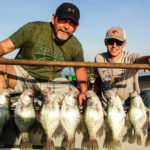
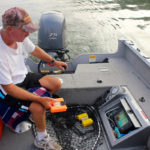
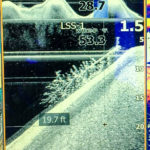
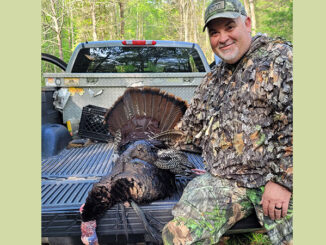

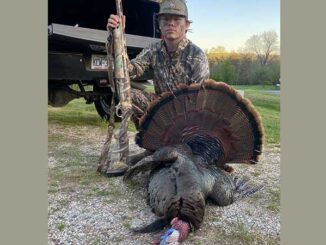

Be the first to comment